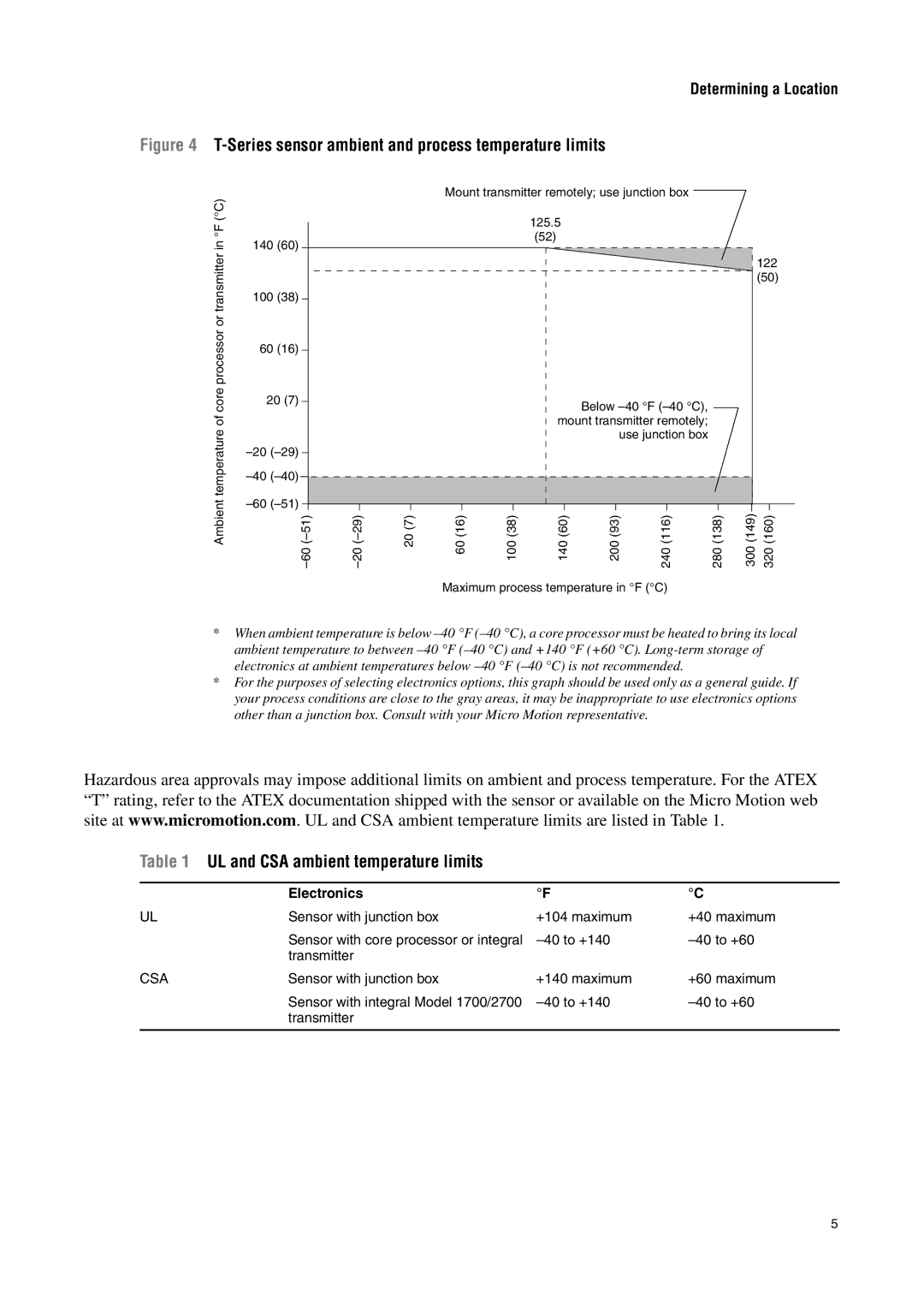
Determining a Location
Figure 4 T-Series sensor ambient and process temperature limits
Mount transmitter remotely; use junction box
(°C) |
|
|
|
|
| 125.5 |
|
|
|
|
|
°F |
|
|
|
|
|
|
|
|
|
| |
|
|
|
|
| (52) |
|
|
|
|
| |
in | 140 (60) |
|
|
|
|
|
|
|
|
| |
|
|
|
|
|
|
|
|
|
| ||
or transmitter |
|
|
|
|
|
|
|
|
|
| 122 |
|
|
|
|
|
|
|
|
|
| (50) | |
100 (38) |
|
|
|
|
|
|
|
|
|
| |
|
|
|
|
|
|
|
|
|
|
| |
core processor | 60 (16) |
|
|
|
|
|
|
|
|
|
|
20 (7) |
|
|
|
|
| Below |
|
|
| ||
of |
|
|
|
|
| mount transmitter remotely; |
|
|
| ||
temperature |
|
|
|
|
|
|
| use junction box |
|
|
|
|
|
|
|
|
|
|
|
|
| ||
|
|
|
|
|
|
|
|
|
| ||
|
|
|
|
|
|
|
|
|
| ||
Ambient |
|
|
|
|
|
|
|
|
|
| |
20 (7) | 60 (16) | 100 (38) | 140 (60) | 200 (93) | 240 (116) | 280 (138) | 300 (149) | 320 (160) | |||
Maximum process temperature in °F (°C)
*When ambient temperature is below
*For the purposes of selecting electronics options, this graph should be used only as a general guide. If your process conditions are close to the gray areas, it may be inappropriate to use electronics options other than a junction box. Consult with your Micro Motion representative.
Hazardous area approvals may impose additional limits on ambient and process temperature. For the ATEX “T” rating, refer to the ATEX documentation shipped with the sensor or available on the Micro Motion web site at www.micromotion.com. UL and CSA ambient temperature limits are listed in Table 1.
Table 1 UL and CSA ambient temperature limits
| Electronics | °F | °C |
UL | Sensor with junction box | +104 maximum | +40 maximum |
| Sensor with core processor or integral | ||
| transmitter |
|
|
CSA | Sensor with junction box | +140 maximum | +60 maximum |
| Sensor with integral Model 1700/2700 | ||
| transmitter |
|
|
|
|
|
|
5
